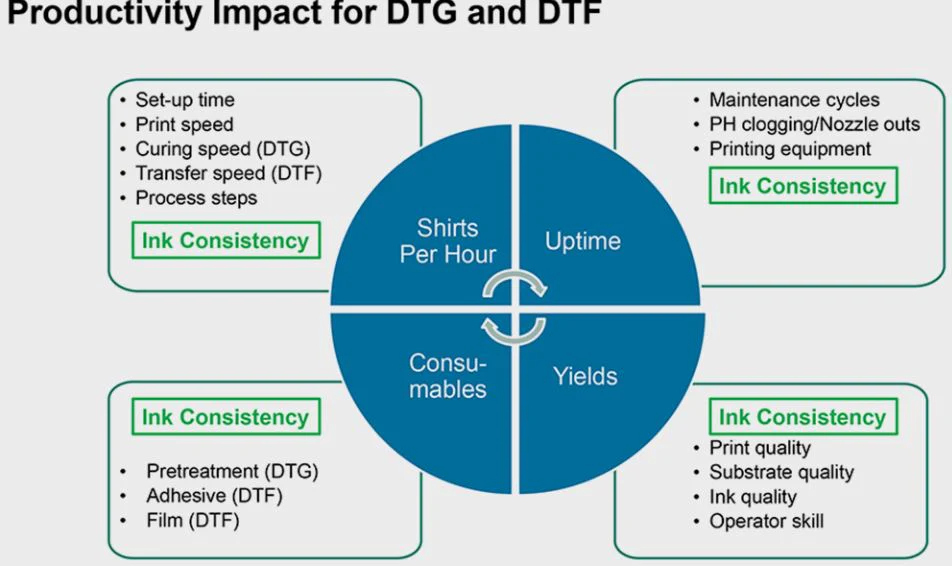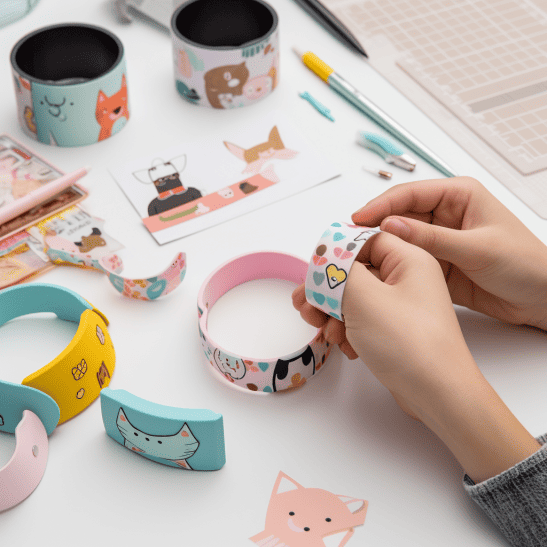Introduction
When it comes to creating custom apparel, there are various printing methods available in the market. Two popular techniques that have gained significant attention are DTG (Direct-to-Garment) printing and DTF (Direct-to-Film) printing. Both methods offer unique advantages and considerations depending on your specific custom apparel needs. In this article, we will delve into the intricacies of DTG and DTF printing, exploring their differences, benefits, and which method might be the right fit for you. So, let’s dive in and uncover the world of DTG vs DTF printing!
DTG Printing: The Art of Direct-to-Garment
What is DTG Printing?
DTG printing is a technique that involves printing high-quality, full-color designs directly onto garments using specialized inkjet printers. This method allows for intricate designs and vibrant colors to be transferred onto various fabrics with precision and accuracy. DTG printing is particularly popular in the custom apparel industry, as it offers flexibility and versatility in creating unique designs on-demand.
How Does DTG Printing Work?
DTG printing utilizes advanced inkjet technology to apply water-based inks directly onto the fabric. The printer’s specialized printhead moves back and forth, depositing tiny droplets of ink onto the garment’s surface. The ink then penetrates the fabric fibers, resulting in a seamless integration of the design with the textile. DTG printing allows for precise control over color saturation and intricate detailing, making it ideal for complex designs and vibrant artwork.
Pros of DTG Printing
- High-quality output: DTG printing delivers exceptional print quality, ensuring that even the smallest details of your design are accurately reproduced on the fabric.
- Vibrant colors: This method allows for the use of a wide color gamut, enabling the creation of vivid and eye-catching designs.
- Suitable for complex designs: DTG printing can reproduce intricate artwork, including gradients, fine lines, and intricate details, with ease.
- No setup costs: Unlike traditional printing methods that require costly setup processes, DTG printing eliminates the need for screens or plates, making it cost-effective for small print runs.
- Quick turnaround time: With DTG printing, designs can be printed on-demand, enabling faster production and delivery.
Cons of DTG Printing
- Limited on certain fabric types: DTG printing works best on 100% cotton or high-cotton blend fabrics. It may not produce the same results on polyester or synthetic materials.
- Longer print time for large orders: While DTG printing is efficient for small to medium print runs, large orders may require longer production times due to the individual nature of the printing process.
DTF Printing: Unveiling the Potential of Direct-to-Film
What is DTF Printing?
DTF printing, also known as Direct-to-Film printing, is a relatively newer printing method that has gained popularity in recent years. This technique involves printing designs onto a special film, which is then transferred onto the garment using a heat press. DTF printing offers unique advantages and has become a preferred choice for certain applications in the custom apparel industry.
How Does DTF Printing Work?
DTF printing starts with printing the design onto a heat-transfer film using a specialized printer. Once the design is printed, a layer of adhesive is applied to the ink using a powder or liquid solution. The film with the design is then placed on the garment and heat pressed, causing the adhesive to bond with the fabric. After the transfer process, the film is peeled off, leaving behind the vibrant design on the garment.
Pros of DTF Printing
- Versatility on different fabric types: DTF printing can be used on a wide range of fabrics, including cotton, polyester, blends, and even hard surfaces like wood or metal.
- Enhanced durability: DTF prints exhibit excellent wash fastness and durability, ensuring that the design remains vibrant even after multiple washes.
- No fabric limitations: Unlike DTG printing, DTF printing is not limited to specific fabric types, making it suitable for a broader range of custom apparel applications.
- Ability to create textured and metallic finishes: DTF printing allows for the application of special effects like metallic finishes or embossed textures, adding a unique touch to your designs.
Cons of DTF Printing
- Higher initial investment: Compared to DTG printing, DTF printing may require a higher upfront investment in specialized equipment and materials.
- Limited color gamut: DTF printing may have a slightly more limited color gamut compared to DTG printing, resulting in slightly different color reproduction.
- Setup time and complexity: DTF printing involves multiple steps, including the preparation of the film and the application of adhesive, which can be time-consuming for large print runs.
DTG vs DTF Printing: Choosing the Right Method
Now that we’ve explored the intricacies of both DTG and DTF printing, you might be wondering which method is the right choice for your custom apparel needs. The decision depends on several factors, including the type of fabric, design complexity, desired finish, and budget. Let’s examine some common scenarios and determine the best-suited method for each:
Scenario 1: Printing Intricate Designs on Cotton T-Shirts
For intricate designs on cotton t-shirts, DTG printing is an excellent choice. Its ability to reproduce fine details and vibrant colors with precision makes it ideal for complex artwork. Additionally, if you require small to medium print runs or need designs produced on-demand, DTG printing offers quick turnaround times and eliminates the need for costly setup processes.
Scenario 2: Printing on a Variety of Fabrics with Special Effects
If you need to print on various fabric types, including polyester or blends, and desire special effects like metallic finishes or textured prints, DTF printing is the way to go. Its versatility and ability to adhere to different surfaces make it suitable for a broader range of applications. DTF printing’s enhanced durability ensures that your designs will withstand regular wear and multiple washes.
Scenario 3: Large Print Runs and Cost Efficiency
When it comes to large print runs, both DTG and DTF printing have their considerations. While DTG printing may be more time-consuming for large orders due to its individual nature, it offers excellent quality and cost-effectiveness for small to medium print runs. On the other hand, DTF printing requires more setup time but becomes more efficient as the print volume increases.
Frequently Asked Questions (FAQs)
Q1: Can DTG printing be used on dark-colored garments? A1: Yes, DTG printing is capable of printing on dark-colored garments. Specialized DTG printers utilize white ink as a base layer before printing the design, allowing for vibrant colors on dark fabrics.
Q2: Does DTF printing have any texture limitations? A2: DTF printing can create various textures, including embossed or raised surfaces. However, the final texture may vary depending on the design and the type of adhesive used.
Q3: Are there any restrictions on design sizes for DTG or DTF printing? A3: Both DTG and DTF printing methods can accommodate designs of various sizes. However, it’s essential to consider the dimensions of your printer and heat press to ensure compatibility.
Q4: Can DTF printing be used for small print runs? A4: Yes, DTF printing is suitable for small print runs. It offers flexibility in printing a range of quantities, making it an excellent choice for custom apparel businesses with diverse order sizes.
Q5: Which method offers better color accuracy: DTG or DTF printing? A5: Both DTG and DTF printing methods offer good color accuracy. However, it’s important to note that slight variations in color reproduction may occur due to the different printing processes and materials used.
Q6: Can I achieve a glossy finish with DTG or DTF printing? A6: Achieving a glossy finish is more feasible with DTF printing. The adhesive used in DTF printing can create a glossy or semi-glossy appearance, adding a unique touch to your designs.
Conclusion
DTG and DTF printing are two prominent methods in the custom apparel industry, each with its strengths and considerations. DTG printing offers high-quality output, vibrant colors, and is suitable for intricate designs, making it a popular choice for cotton-based garments. On the other hand, DTF printing provides versatility across various fabric types, enhanced durability, and the ability to incorporate special effects.
When deciding between DTG and DTF printing, consider factors such as fabric type, design complexity, desired finish, and budget. By evaluating these aspects, you can make an informed decision that aligns with your custom apparel needs. Whether you choose DTG or DTF printing, both methods offer unique advantages that can bring your creative visions to life.




